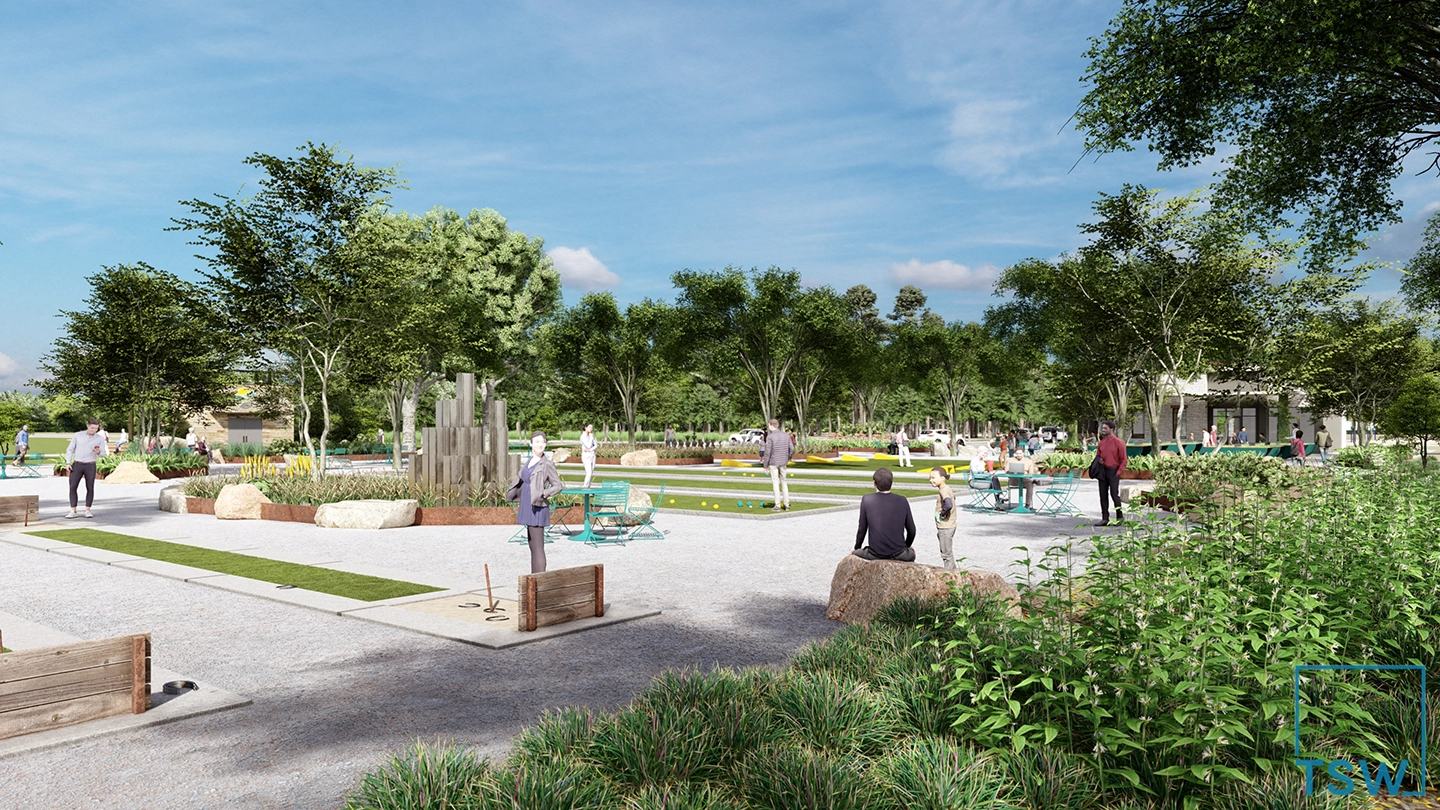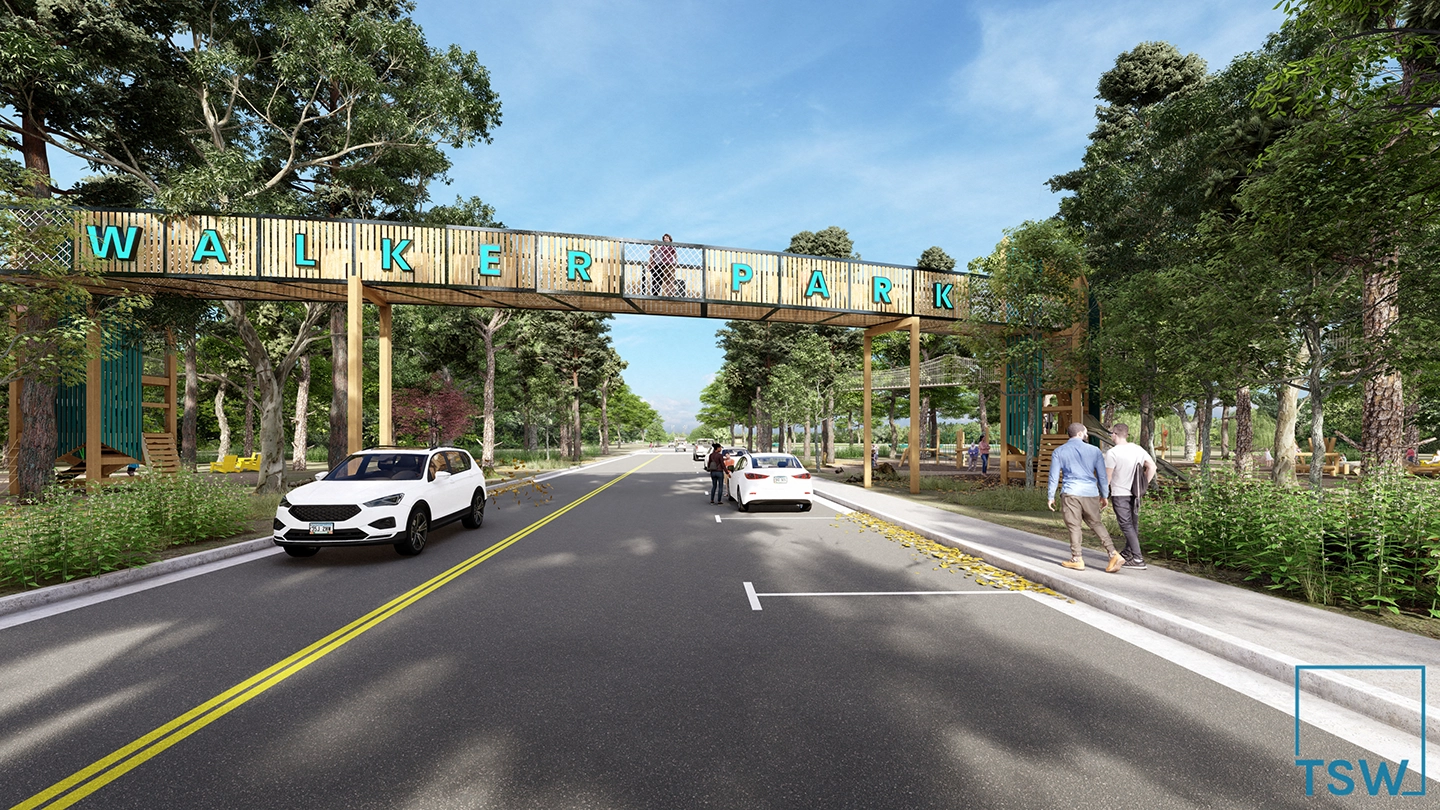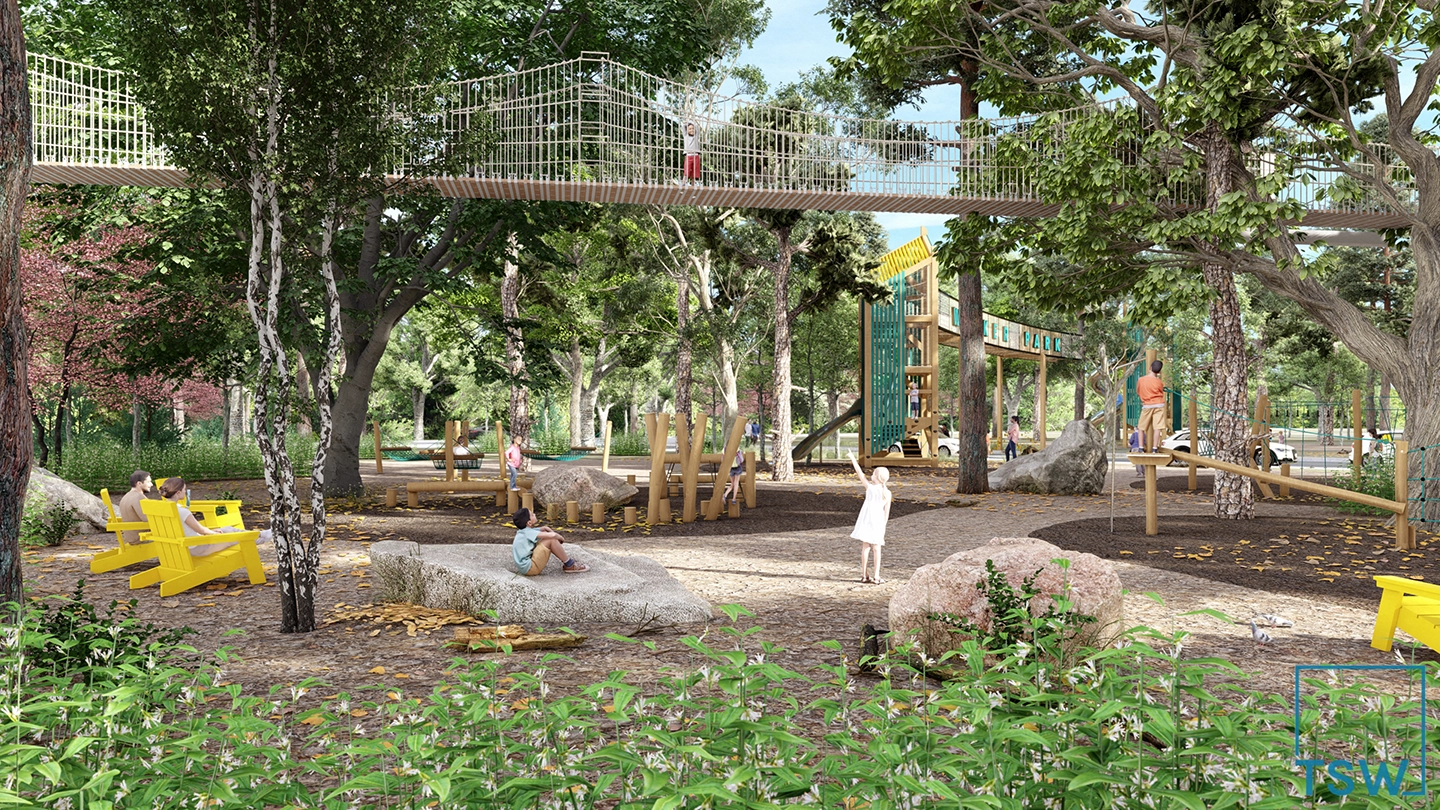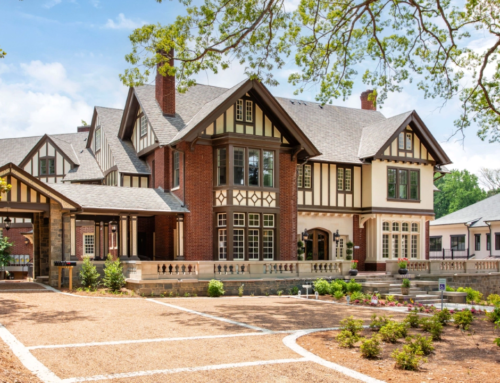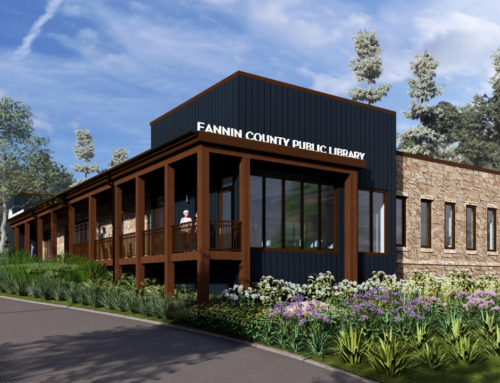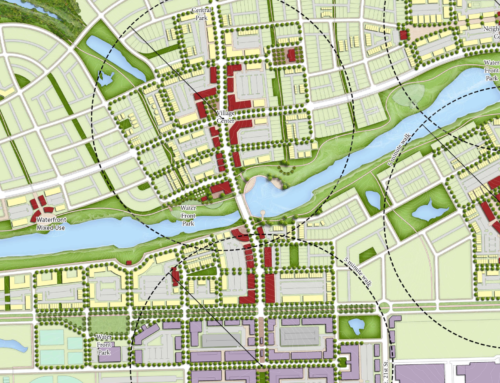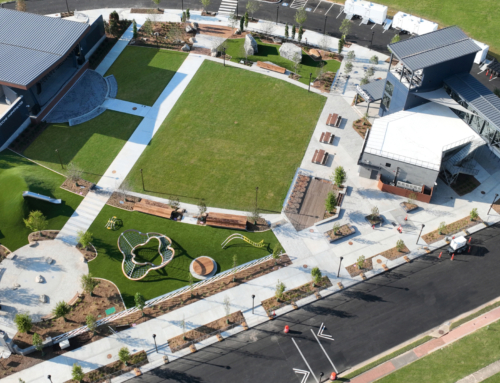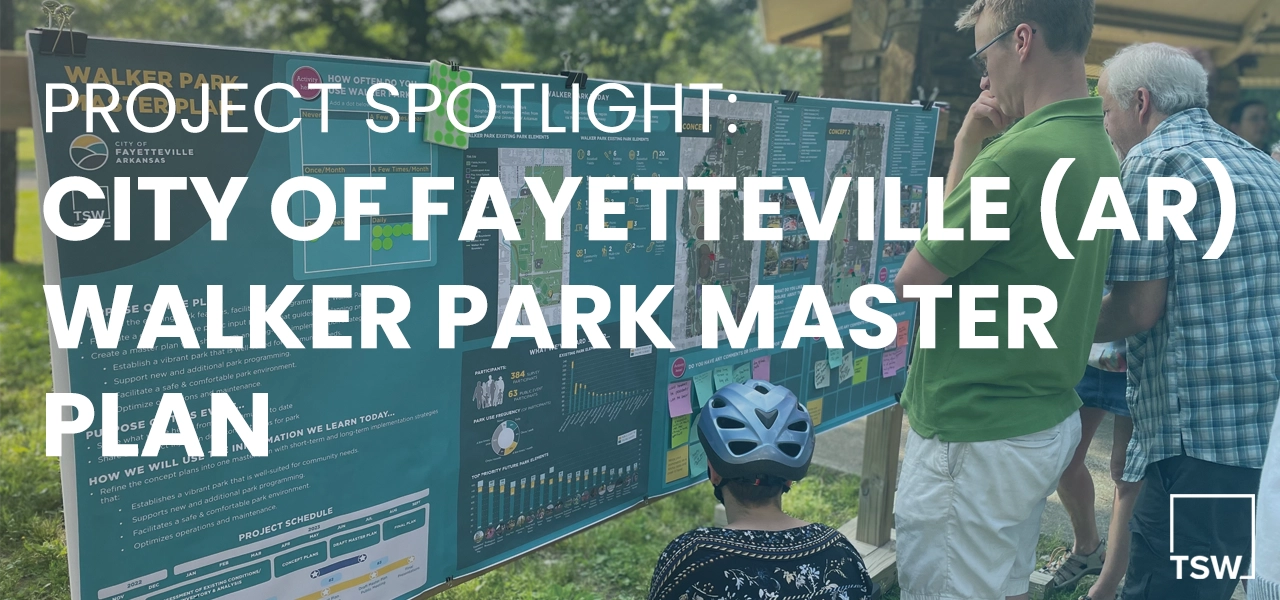
Walker Park: Updated Design Enhances the Urban Oasis for All
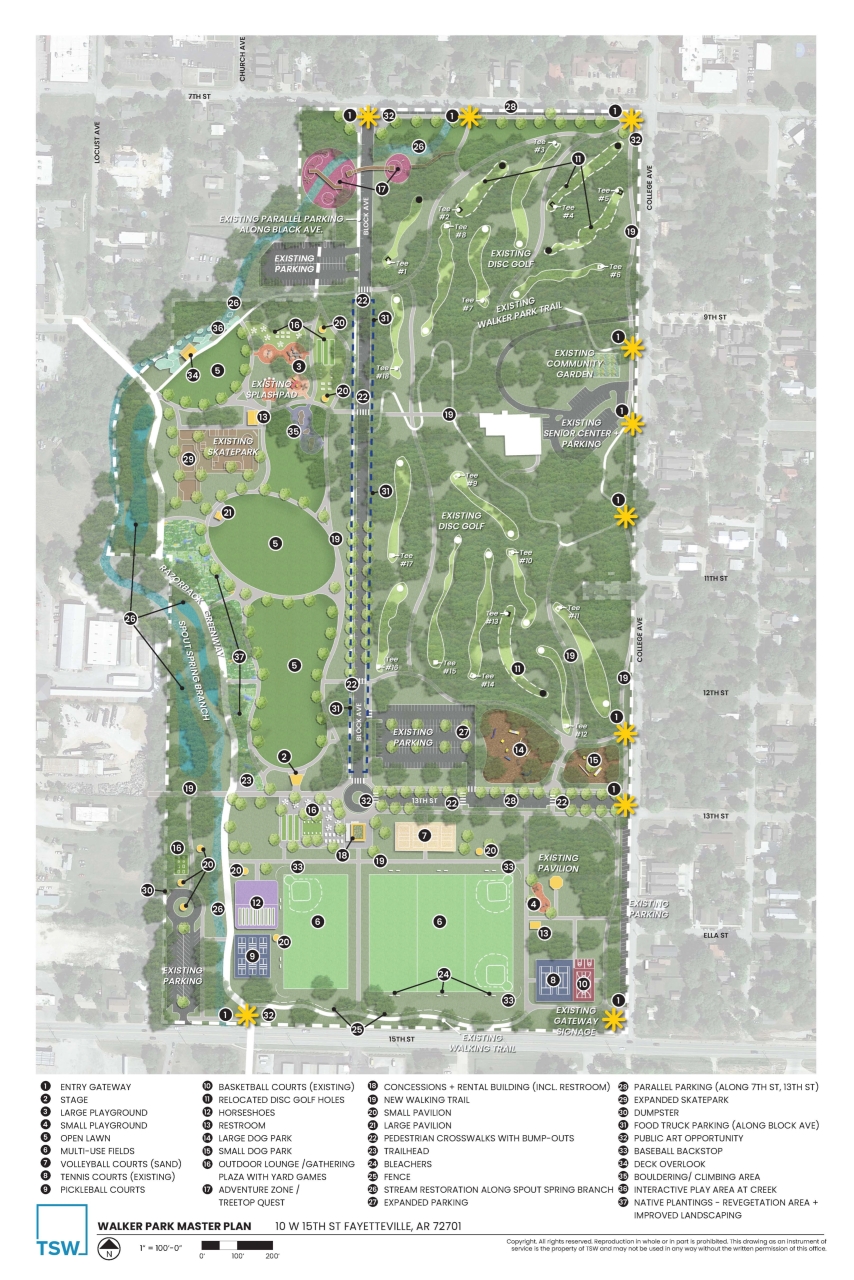
Successful public greenspaces serve a variety of audiences, so designing or updating them can be a challenge for planners and landscape architects. How do you accommodate active children as well as those who seek peaceful surroundings? Organized sports leagues and spontaneous sports enthusiasts? Walkers, cyclists, runners, moms with strollers, visitors in wheelchairs, skaters and others? In Fayetteville, Arkansas, city officials and TSW were tasked with updating historic Walker Park, the city’s largest community park, with new, multi-purpose areas and amenities for a variety of potential audiences, including people experiencing homelessness.
Located at 10 W. 15th Street, just south of Fayetteville’s central business district, the 78-acre Walker Park was created nearly 80 years ago, and is open daily from 5 a.m. – 11 p.m. In addition to showcasing and preserving natural beauty, the park is known for its public sports facilities, including a splashpad, skatepark, basketball and tennis courts, disc golf and playgrounds. The park boasts a 1.2 mile walking path, and connects to the Frisco Trail and Razorback Regional Greenway. There are three pavilions and areas for disc golf and horseshoes.
Parks reflect the communities they serve, necessitating updates and re-designs as the needs and desires of local populations evolve, according to Ted Jack, park planning superintendent for the City of Fayetteville, who oversaw the planning process with TSW’s landscape architecture team. Old pastimes fall out of favor, and new ones become popular. Demographics change. In Fayetteville, adults and children of all ages and walks of life utilize Walker Park, but the aging spaces and facilities were not fully optimized to meet the needs of the current population. In addition, citizens experiencing homelessness use the park as a safe and peaceful respite from stressful living situations, as well as a place to gather close to nearby social service organizations, but their needs were not being fully met, either. The city has updated the park’s features over the decades, but according to Jack, this is the first revitalization plan that has specifically considered the needs of homeless citizens along with other key user groups.
“By their very name, public greenspaces are for everyone, including those experiencing homelessness”, said Beverly Bell, PLA, who leads Atlanta-based TSW’s Chattanooga, TN office, and worked with the City of Fayetteville to create Walker Park’s new Master Plan. “There are several social service organizations located near the southern end of the park, making the park an ideal respite for those being served. When we began the planning process to update the park, we wanted to take into account the needs and desires of all who want to enjoy this wonderful city amenity, without excluding anyone. We held discussions with multiple public groups, businesses and service organizations to learn about their needs and desires for the park. This process gave the city a unique opportunity to design spaces to meet those needs, including those of residents experiencing homelessness.”
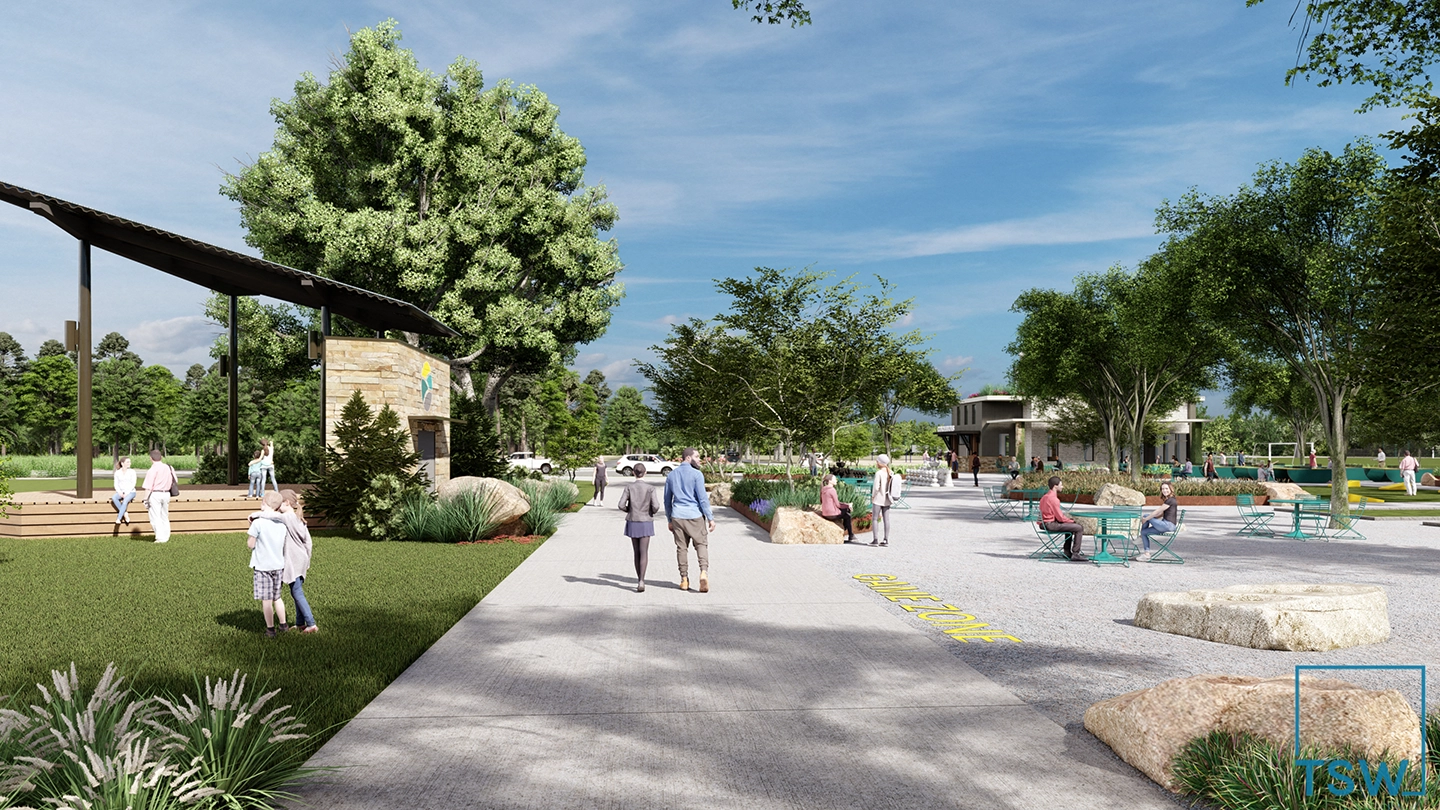
Some of the ideas generated by the meetings and incorporated into the new plan include creating multiple access points into the park, installing new lighting throughout the property, creating a diversity of large and small areas for people to gather together, and accommodating a variety of uses from quiet to active. Attention was paid to active spaces throughout the park that also support social interaction, restrooms, parking, seating, performance spaces and trails.
With a goal of creating space for everyone, the new plan for Walker Park divides the space into various zones: Passive Recreation, Adventure Play and Active Sports. After meetings with social services organizations and park visitors experiencing homelessness, special features were incorporated into the design to accommodate and address the needs of this specific population. For example, an existing parking lot was redesigned for the use of social service vehicles like a mobile clinic to use. A large dumpster will be installed, along with multiple small pavilions where visitors can sit, play chess or cards, eat and rest. This area of the park is close to organizations such as the Salvation Army, 7hills Homeless Center, thrift stores, a storage facility, and a public laundromat.
Throughout the park, popular existing features such as the disc golf course, horseshoes area and splashpad were updated and new features including an Adventure Zone/Treetop Quest, large and small dog parks, multi-use fields and courts for sand volleyball, pickleball and horseshoes were added. Brightly-colored murals brighten the space. Following public input and approval of the plan, TSW completed construction documents and is in the process of permitting the project. Work is scheduled to begin in Summer 2025.
